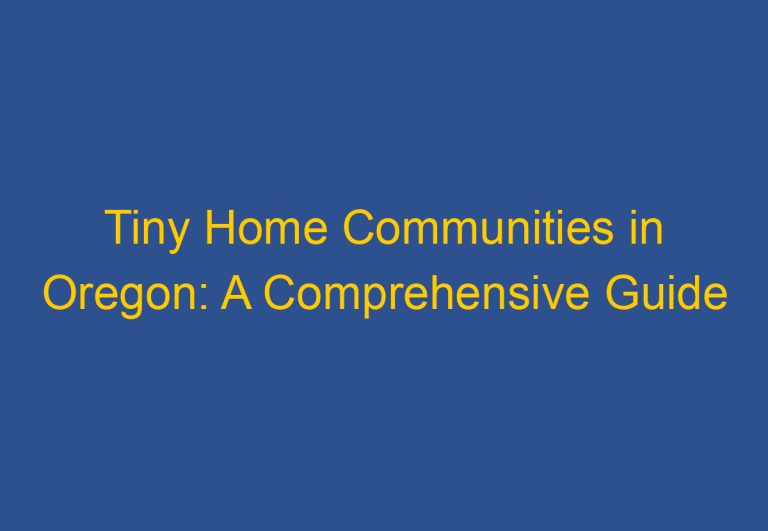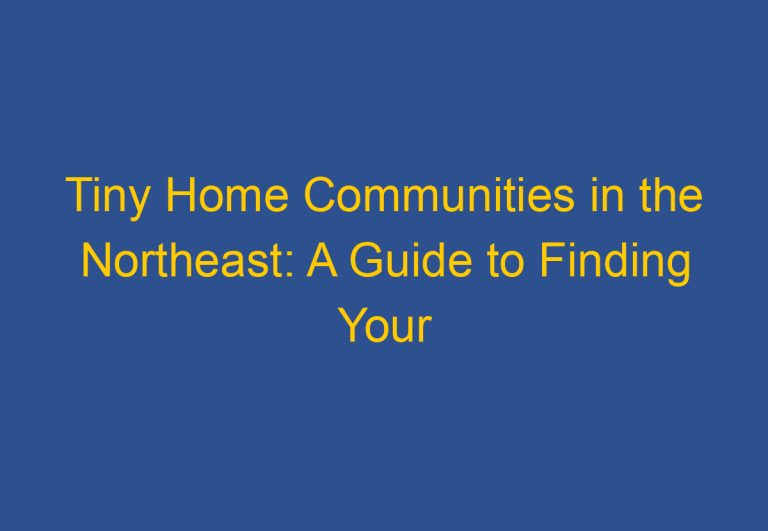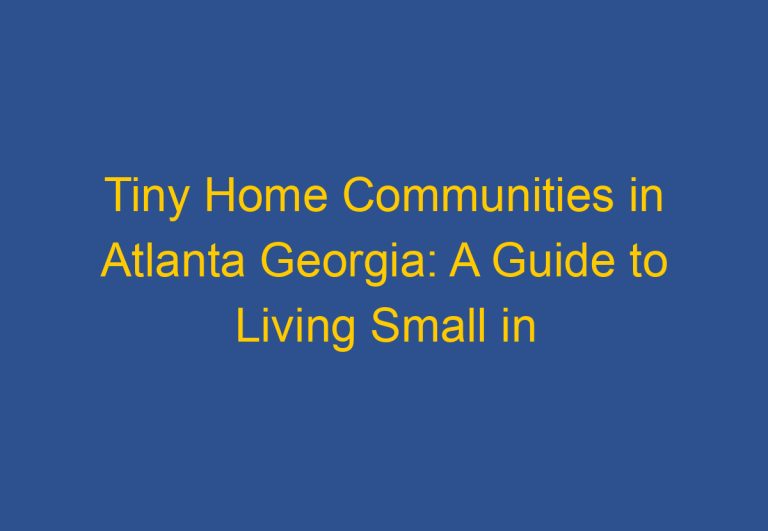Tiny Homes for Low-Income Seniors: Affordable Housing Solutions for Older Adults
Tiny homes have become increasingly popular as a solution for affordable housing. These small homes can offer low-income seniors a chance to live independently while reducing their living expenses. With the rising cost of housing, many seniors struggle to make ends meet, and tiny homes can be an attractive option for those looking to downsize and save money.
Tiny homes are designed to be compact and efficient, with all the necessary amenities in a small space. They can be built on a foundation or trailer, making them a flexible option for those who want to travel or move around. For low-income seniors, tiny homes can be a viable option for affordable housing as they require less maintenance and utilities, reducing the overall cost of living.
Living in a tiny home can also offer seniors a sense of community and belonging. Many tiny home communities have formed around the country, offering a supportive and social environment for residents. With the right resources and support, tiny homes can be a solution for low-income seniors looking for affordable and independent living options.
Design and Accessibility Features
When it comes to designing tiny homes for low-income seniors, there are several factors to consider. These homes must be designed to maximize space while ensuring accessibility and mobility for seniors with disabilities. Safety and comfort are also important considerations.
Space Optimization and Downsizing
One of the key features of tiny homes is space optimization. These homes are designed to maximize every inch of space, making them ideal for seniors who want to downsize. With a smaller living space, seniors can reduce their expenses and simplify their lives. Tiny homes can also be designed to include storage solutions that help seniors keep their homes organized.
Accessibility and Mobility
Accessibility and mobility are critical features of tiny homes for low-income seniors. These homes must be designed to accommodate seniors with disabilities, including those who use wheelchairs. Wide doorways and hallways are essential to ensure that seniors can move around freely. Raised toilets and grab bars in the bathroom can help seniors with mobility issues.
Safety and Comfort
Safety and comfort are also important considerations when designing tiny homes for low-income seniors. These homes must be designed to be safe and comfortable for seniors to live in. Non-slip flooring can help prevent falls, while handrails and grab bars can provide additional support. Tiny homes can also be designed to optimize natural light, which can improve the overall comfort of the living space.
In conclusion, designing tiny homes for low-income seniors requires careful consideration of several factors, including space optimization, accessibility and mobility, safety, and comfort. By designing homes that meet these criteria, seniors can enjoy a comfortable and affordable living space that meets their unique needs.
Financial and Legal Considerations
Cost and Budgeting
One of the most significant benefits of tiny homes for low-income seniors is their affordability. Tiny homes are significantly cheaper than traditional homes, and they offer many financial advantages. Seniors can save money on property taxes, utilities, and maintenance costs, which can be a significant advantage for those on a fixed income.
When considering the cost of a tiny home, it is essential to factor in the initial cost of the home, as well as the cost of the land, foundation, and utilities. Seniors should budget carefully to ensure they can afford all of these expenses. It is also important to consider the long-term financial implications of owning a tiny home, including the potential for rental income and the ability to sell the home if needed.
Ownership and Foundation
When it comes to owning a tiny home, there are some legal and zoning considerations to keep in mind. Seniors should research their local regulations to ensure they can legally own and live in a tiny home. They should also consider the type of foundation they want for their home. Some options include a traditional foundation, a mobile foundation, or a foundation that allows the home to be moved easily.
It is important to choose a foundation that is both affordable and safe. Seniors should also consider the long-term maintenance costs of their foundation, as well as any potential legal issues that may arise.
Utilities and Maintenance
Finally, seniors should consider the utilities and maintenance costs associated with owning a tiny home. While tiny homes are generally more affordable than traditional homes, they still require regular maintenance to keep them in good condition. Seniors should budget for regular maintenance costs, including repairs to their home’s plumbing, electrical, and heating systems.
Seniors should also consider the cost of utilities, including water, electricity, and gas. Tiny homes are often more energy-efficient than traditional homes, which can result in lower utility bills. However, seniors should still budget carefully to ensure they can afford these expenses.
In summary, tiny homes offer many financial and legal advantages for low-income seniors. By carefully considering the cost of the home, the type of foundation, and the utilities and maintenance costs, seniors can ensure they are making a sound financial decision.
Frequently Asked Questions
What are the eligibility requirements for low-income seniors to join a tiny home community?
To be eligible for a tiny home community designated for low-income seniors, one must meet certain income requirements. These requirements vary by state and community, but typically, seniors must have an income that falls below a certain percentage of the area median income (AMI). Additionally, some communities may require seniors to be over a certain age or have a specific housing need.
How does one apply for a tiny home designated for low-income seniors in California?
To apply for a tiny home designated for low-income seniors in California, seniors should contact the local housing authority or community development agency. These agencies can provide information on available communities and the application process. Seniors may need to provide proof of income, age, and housing need as part of the application process.
Which cities in California are most accommodating to tiny homes for seniors?
Several cities in California have embraced tiny homes as a solution to the affordable housing crisis, including San Francisco, Los Angeles, and San Diego. These cities have passed ordinances allowing for the construction and placement of tiny homes, including those designated for low-income seniors.
What financial assistance options are available for seniors seeking to live in a tiny home?
Seniors seeking to live in a tiny home may be eligible for financial assistance through various programs, including the Section 8 Housing Choice Voucher Program and the Low-Income Home Energy Assistance Program (LIHEAP). Additionally, some communities may offer rent subsidies or other financial assistance to eligible seniors.
Are there any programs offering free or subsidized tiny homes to low-income seniors?
While there are no programs offering free tiny homes to low-income seniors, some communities may offer subsidized or low-cost options. Seniors should contact their local housing authority or community development agency for more information on available programs.
What amenities and features are typically included in tiny homes for seniors?
Tiny homes for seniors typically include basic amenities, such as a kitchen, bathroom, and sleeping area. Many communities also offer shared amenities, such as community gardens, laundry facilities, and recreational areas. Additionally, some tiny homes may be designed with accessibility features, such as wider doorways and grab bars, to accommodate seniors with mobility issues.










